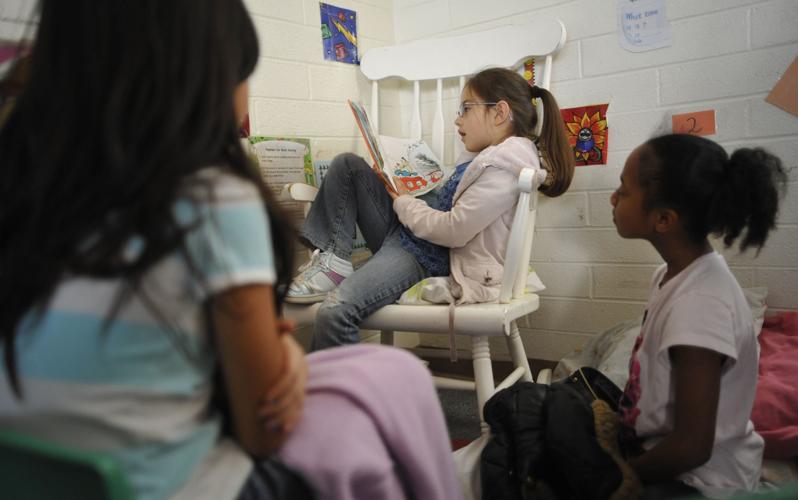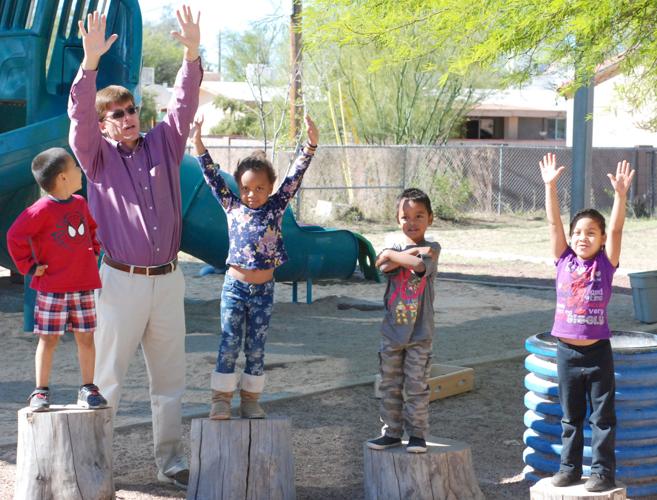Hundreds of child care providers are turning away families that qualify for state financial assistance, saying they can no longer afford to keep them as clients.
Arizona families lost 788 providers of subsidized child care between January 2016 and July 31, 2018, including 369 centers and group homes ending their state contracts.
Of those 369 providers, 174 facilities closed entirely. The other 419 were home-based contractors that stopped offering child care.
“It’s another crisis that’s building up that no one is paying attention to,” said Michelle Saint Hilarie, who collects data as senior program director for Arizona’s Child Care Resource and Referral, a statewide service of Child & Family Resources. “We are struggling to find options for families.”
The reason, many say, is that Arizona’s reimbursement rates haven’t changed for 18 years, so providers say they cannot offer care at prices families can afford. The challenges started with the Great Recession a decade ago and escalated a few years ago with tougher requirements on how states qualify for federal money for child care subsidies.
Compounding the frustration for family advocacy groups is that Arizona has $56 million in federal funds earmarked to address some of these problems, but the state isn’t using it. Legislators voted in May against spending the money, saying they were unclear about how the state’s Department of Economic Security planned to use it.
The money, which will remain unused until Arizona lawmakers take action, is Arizona’s share of $5.2 billion Congress approved in March to distribute nationwide to boost the federal Child Care Development Block Grants program.
The state gets about $125 million per year in federal Child Care and Development Funds, which provide most of what it uses for its child care programs.
Because the legislative session has ended, Arizona lawmakers would need to hold a special session or wait until the 2019 session to make the additional $56 million available.
More walking away
Just a few years ago, Pima County had more than 400 DES-certified home-based providers. Now there are 119.
Home providers are vital, Saint Hilarie said, because they often have flexible hours that help parents who need to work evenings or weekends.
The provider decline started with the Great Recession a decade ago, but dramatically accelerated in recent years. That’s partly because stricter provisions were added in 2014 to the federal funding Arizona and other states receive under the Child Care Development Block Grant Act.
“And rightfully so,” Saint Hilarie said. “People should have the right qualifications for working with children.”
But as more health and safety requirements were added to the list of mandates for providers already burdened with low reimbursement rates, more started backing away.
“They’d say, ‘You don’t pay me enough’ or, ‘I don’t have DES kids in my care,’ or, ‘I only have one or two,’ ” she said.
The state’s Department of Health and Human Services provided a list of 43 preschools and child care centers that closed in Pima County since January 2016, although it’s unclear how many were due to funding issues.
“Urgent situation”
The Department of Economic Security recently hosted a public hearing in Tucson on a state report on child care. Only a couple of providers attended, although more than 60 provided moments online.
The Child Care & Development Fund Plan needs to be submitted to the U.S. Department of Health and Human Services every three years.
“We need to get rates closer to what it actually costs to provide care,” said Bill Berk, director of a local preschool called Outer Limits. “Right now, it’s very challenging for families in poverty gaps to get quality care.”
The state report does not address critical issues, such as reimbursement rates to providers or barriers to equal access for poor children, said Michelle Crow, director of the Southern Arizona office for the Children’s Action Alliance, a nonpartisan children’s advocacy group.
She asked why DES didn’t reference the $56 million and how money that could help Arizona raise its reimbursement rates.
“This is an urgent situation for all involved,” Crow said. “We are hearing daily of yet another child care center that is having to close.”
DES didn’t address the $56 million because the planning report is not focused on implementing “future activities,” DES spokesman Brett Bezio wrote in an email to the Star.
The agency is working on a budget proposal to get legislative authority to use the money, Bezio said. There are only two ways Arizona can use it: to provide subsidies for child care or to increase the quality of existing programs.
The response from DES is frustrating, says Dana Naimark, president of the Children’s Action Alliance.
“As an organization that works with many partners across this state helping families and children, we believe it is a disservice to turn in a report that leaves so many questions unanswered,” she said. “We have asked them to amend it to include the $56 million and to explain what they are going to do now, going forward.”
In early April, DES provided subsidies to 2,850 children on the waiting list for child care, briefly reducing that number to 101. As of July 20, the waiting list had grown to include 854 children and 489 parents who need help affording care for their children so they can work.
The waiting list is not an accurate gauge of how many families need help, Naimark said. The waiting lists tend to be so long that people stop bothering to sign up, she said. Other times, people have been waiting long enough that they need to be re-evaluated to see if they still qualify.
Gov. Doug Ducey is waiting for DES to submit its proposal, wrote spokeswoman Elizabeth Berry in an email response to questions from the Star.
“The care and safety of children in Arizona is of utmost importance and the governor has every intention of putting these dollars to use,” Berry wrote. “These funds do not revert and we’ve asked DES to work with stakeholders and advocates to develop a thoughtful budget proposal to best use those dollars during the upcoming legislative session.”
One of oldest preschools closes
Tucson Nursery School, one of Tucson’s oldest preschools, fell victim to low reimbursement rates and closed March 30.
“While officially founded in 1946, it had its roots in World War II,” said Eric Schindler, CEO of Child & Family Resources, which was affiliated with the school for years and ran it during its last year.
“With men off at war, and women needing to work day and night shifts to support the war effort in factories, there needed to be some way to care for children, particularly of less wealthy women while they were on their shift work,” he said.
About 10 years ago, the school was near bankruptcy and set to close.
Schindler said members of community entities like Tucson Electric Power and the United Way urged the Child & Family Resources board to keep it open and helped keep it going.
During its last year, however, Child & Family Resources lost about $300,000 running the school, at 2385 S. Plumer Ave.
“Child & Family Resources decided that they were not willing to run a preschool if it could not be high quality,” said Berk, a board member for the agency.
Schindler said trying to operate a high-quality preschool in a low-income neighborhood, where the majority of children are on DES subsidies, “has proven to be unsustainable.”
“We just did not have enough enrolled children whose parents could afford to pay.”





